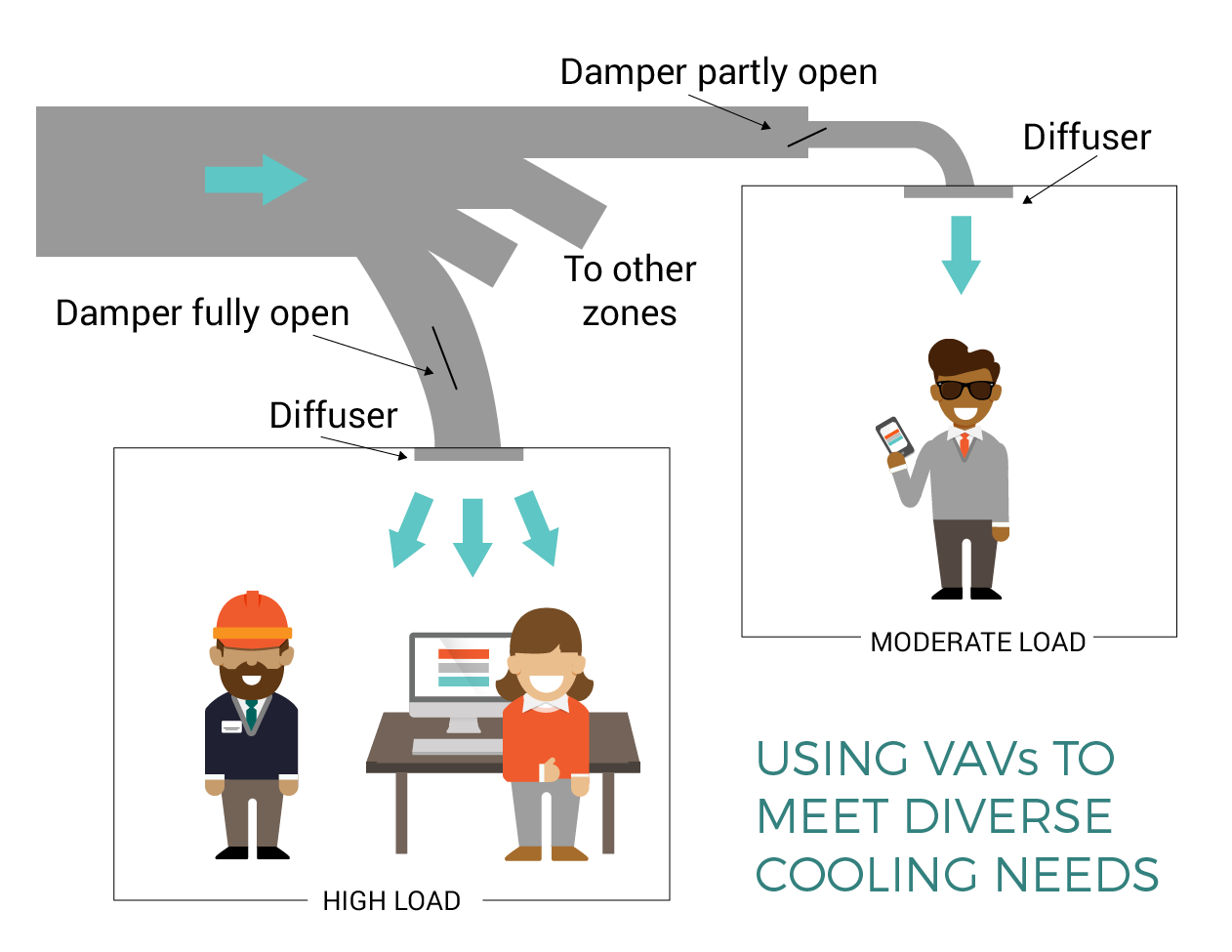From the ancient Roman system of underfloor heating to Benjamin Franklin's "Pennsylvania fireplace," controlling air circulation and keeping the indoors a comfortable temperature is an age-old challenge. It is no exaggeration to say that the discovery of a mechanism for effective central heating was essential to making the modern skyscraper feasible. Today, the vast majority of large commercial buildings around the world are outfitted with air systems to distribute heating and cooling. Variable Air Volume (VAV) systems are the most prevalent type of air system. Most building occupants will never see the inner workings of a VAV system, but its performance is critical to controlling temperature, air quality and even oxygen levels.
Since Comfy directly controls VAV terminals, we know a thing or two about how these invisible giants work. Here are a few fun facts.
1. Every VAV box has a damper, a thermostat, and a controller.
Almost everyone is familiar with thermostats, but have you ever wondered what they’re connected to? Essentially, every thermostat has a temperature sensor that is constantly reporting to the VAV controller, a device that is attached to a large damper that determines how much air enters the space. When the temperature rises above the pre-determined setpoint, the VAV controller decides it’s time to open the damper and deliver cool air to the space through diffusers (those vents you usually see in the ceiling). This is done via an actuator, a small motor that turns the damper open to a specific position depending on the amount of cooling that is needed. Once cooling begins, the VAV controller continues to monitor the temperature frequently. As the temperature approaches the setpoint, the VAV box will deliver less air—don’t want to overshoot and freeze the occupants! Even when there’s no need for heating or cooling, VAV boxes continue to deliver a certain amount of air to make sure there’s enough fresh air entering the space.
Not all VAV boxes provide heating, but for those that do, it’s a slightly more complicated process. The air reaches the VAV box cold, so it has to be heated up to at least 80℉ in order to warm up the space quickly. It achieves this with a heating element located next to the damper. It could be an electric heating element (like those energy-hogging space heaters that some people are forced to use when their office is frigid!), or a heating coil supplied with hot water from a boiler. Either way, the VAV controller has a sequence for warming up the air and delivering it to the space until the heating setpoint is reached. What makes VAV boxes efficient is that they have the ability to supply only a small amount of heating or cooling if that’s all that's needed. It’s like putting on a light sweater when a breeze picks up instead of a heavy winter coat with faux fur and mittens.
2. VAVs can easily have many zones.
Most buildings that use air systems for heating and cooling have either a constant air volume (CAV) or a variable air volume (VAV) system. CAV systems are used in smaller spaces and commonly treat an entire floor like a single thermal zone. In contrast, VAV systems can adjust air flow for several zones independently. For instance, with VAVs, someone sitting in a zone with a sunny southern exposure can experience cooling while their colleague in an interior zone with no sunlight can experience heating. Because VAV systems are more versatile and efficient than CAV systems, they are more widely used.

3. Air systems respond faster than radiant systems.
Radiant heating and cooling systems are different from air systems in that they heat or cool surfaces rather than air. While radiant systems typically require less energy, they are not as fast-responding as air systems. It's also much more difficult to make localized adjustments in temperature. Some commercial buildings use radiant in tandem with VAVs. This allows the system to meet most of the heating or cooling demands with an efficient radiant system, while still staying responsive enough to meet unpredictable, short-term demands. VAV systems are well-suited for a bit of cooling here and there, or for carrying out all the heating and cooling that a building needs.
___________
Variable Air Volume systems are the most prevalent way of heating and cooling commercial buildings. They are also fast-responding and customizable based on location, making VAVs ideal for smart building technology. They usually have digital controllers, which make them great candidates for software integration. In an instant, they can be digitally controlled to change the amount of heating or cooling delivered to a space. They’re ripe and ready for smarter controls, which is what we're delivering with Comfy!
Want more? Subscribe to follow along and get social with #AtoZSmartBldgs.
